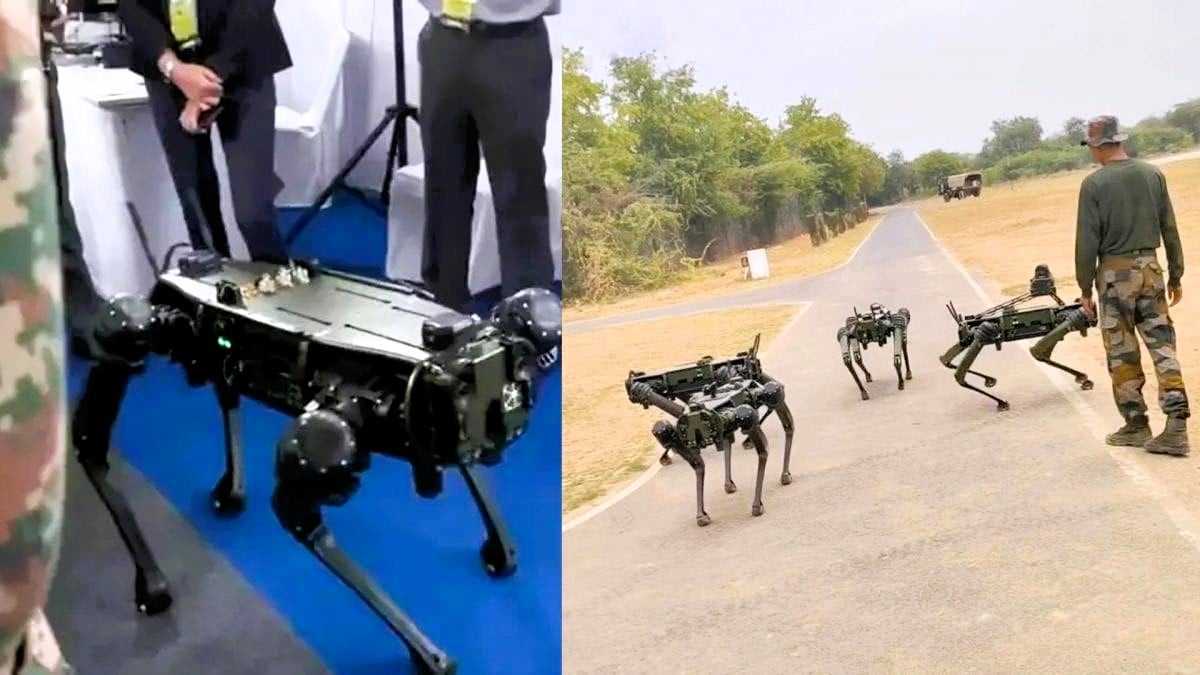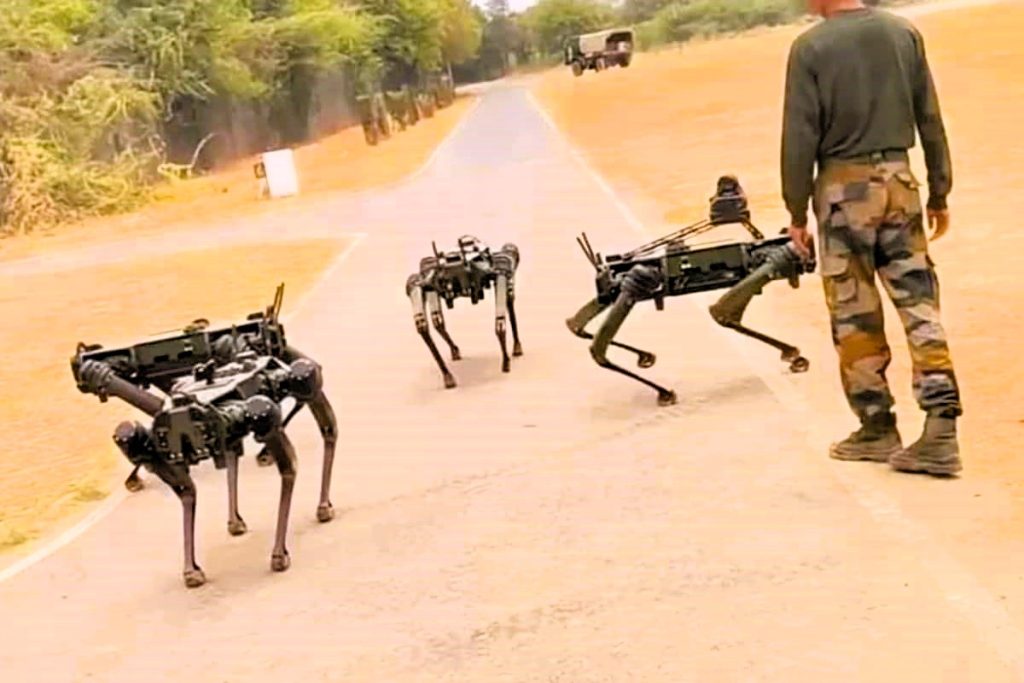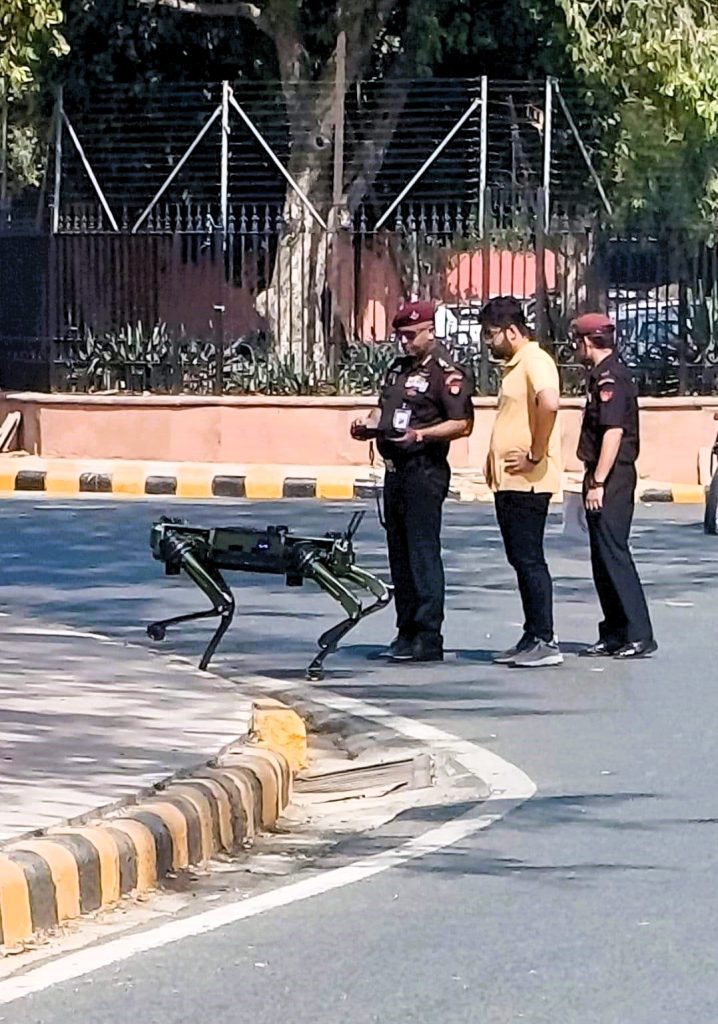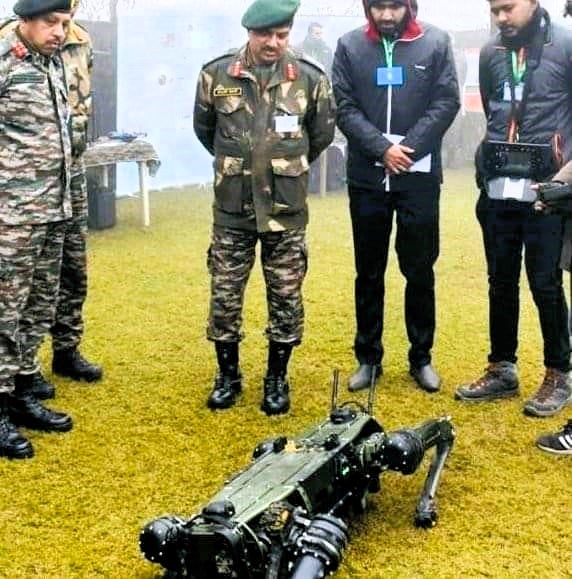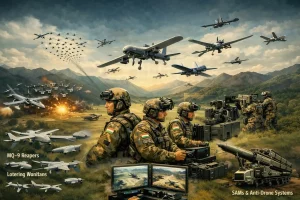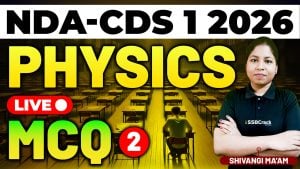The battlefield landscape is rapidly evolving, with the integration of cutting-edge technologies like robotics and artificial intelligence (AI) transforming the face of modern warfare. In a strategic move to bolster its operational capabilities, the Indian Army is gearing up to induct a novel addition to its squad – remote-controlled robotic “MULE” (Multi-Utility Legged Equipment) dogs. These four-legged autonomous machines promise to revolutionize military surveillance, logistics, and combat support, ushering in a new era of technological advancement in the Indian defense forces. The article delve into Indian Army To Induct ‘Four-Legged Soldiers’ To Its Squad Soon; Know All About Remote-Controlled MULE Robot Dogs.
10 Famous Personalities Held Highly Designated Posts In The Indian Army
The Rise of Robotic Dogs in Military Applications
The integration of robotics and AI into military operations is not a novel concept, but it has gained significant momentum in recent years. Globally, various nations have showcased their advancements in this domain, with China leading the way by introducing gun-toting robotic dogs in its military exercises. These advanced machines, weighing up to 50 kg, are designed for both combat and reconnaissance missions, showcasing the potential of robotic technology in the battlefield.
Recognizing the strategic advantages offered by these robotic systems, the Indian Army has now decided to follow suit and incorporate MULE robot dogs into its operational framework. This move aims to bolster the Army’s capabilities, ensure personnel safety, and maintain a competitive edge in the ever-evolving landscape of modern warfare.
The MULE Robot Dogs: Capabilities and Applications
The MULE robot dogs, set to be inducted into the Indian Army, are equipped with a range of advanced features that make them invaluable assets on the battlefield. These remote-controlled machines are designed to conduct surveillance in challenging terrains, such as mountainous regions and areas where targets may be concealed, thereby minimizing the risks to human soldiers.
Surveillance and Reconnaissance
The MULE robots are outfitted with high-resolution cameras and thermal sensors, enabling them to gather real-time data and intelligence on enemy movements and hazardous situations. By providing enhanced situational awareness, these robotic dogs can help the Army monitor and assess threats from a safe distance, improving the overall decision-making process.
Load-Carrying Capabilities
In addition to their surveillance capabilities, the MULE robots can also be utilized to transport light loads to frontline soldiers, enhancing operational efficiency and reducing the burden on human personnel. This feature can prove particularly useful in challenging terrain where traditional logistics solutions may be impractical or unsafe.
Combat Support
The MULE robots can be further integrated with small arms, providing the Indian Army with the capability to engage enemies without endangering human lives. This integration of weaponry presents a new dimension in confronting threats, expanding the Army’s combat support capabilities.
Procurement and Induction Process
According to reports, the Indian Army has placed an order for 100 MULE robot dogs as part of an emergency procurement process. This initial batch of 100 units is likely to be inducted into the Army soon, following a pre-dispatch inspection of 25 such robots.
The emergency procurement process allows for contracts up to Rs 300 crore, and as per regulations, all such orders must be sourced from Indian companies. However, the manufacturing details of the Delhi-based company fulfilling the order remain undisclosed.
If the MULE robots demonstrate efficiency and effectiveness in their initial deployment, the Indian Army plans to scale up the procurement, further enhancing its robotic capabilities.
Indian Army Sports Quota Recruitment 2024
Challenges and Considerations
While the induction of MULE robot dogs represents a significant technological advancement for the Indian Army, there are several challenges and considerations that need to be addressed:
Reliability and Durability
Ensuring the reliability and durability of these robotic systems in the harsh environmental conditions of the Indian subcontinent will be a crucial factor in their successful deployment. The Army will need to thoroughly test and validate the performance of the MULE robots under various field conditions.
Maintenance and Logistics
Maintaining and servicing the MULE robots will require specialized training and support infrastructure. The Army will need to develop robust maintenance protocols and ensure the availability of spare parts and technical expertise to keep these robotic systems operational.
Ethical Considerations
The integration of weaponry into robotic systems raises ethical concerns regarding the use of autonomous or semi-autonomous systems in combat operations. The Indian Army will need to carefully consider the ethical implications and develop appropriate guidelines and protocols to ensure the responsible and accountable deployment of these technologies.
Cybersecurity Vulnerabilities
As with any networked technology, the MULE robots may be susceptible to cyber threats, such as hacking or jamming of their control systems. The Army will need to implement robust cybersecurity measures to mitigate these risks and ensure the secure operation of these robotic assets.
The Way Forward: Embracing Technological Transformation
The induction of MULE robot dogs into the Indian Army’s arsenal represents a significant step forward in the integration of advanced technologies into military operations. This move aligns with the broader trend of the “rise of AI in the battlefield,” as nations strive to leverage the strategic advantages offered by robotics and AI-powered systems.
By embracing this technological transformation, the Indian Army aims to enhance its operational efficiency, ensure the safety of its personnel, and maintain a competitive edge in the ever-evolving landscape of modern warfare. The successful deployment of the MULE robots will not only bolster the Army’s capabilities but also pave the way for further advancements in the integration of robotics and AI into India’s defense forces.
As the Indian Army continues to explore and implement these cutting-edge technologies, it will be crucial to address the challenges and considerations mentioned earlier, ensuring the reliable, ethical, and secure deployment of these robotic systems. With a strategic and well-planned approach, the Indian Army can harness the full potential of MULE robot dogs and other emerging technologies to strengthen its position as a formidable force in the global defense landscape.
List of Important Battle Tanks of Indian Army
Conclusion
The induction of MULE robot dogs into the Indian Army’s squad represents a significant milestone in the integration of advanced technologies into military operations. These remote-controlled, four-legged robotic systems promise to revolutionize surveillance, logistics, and combat support, enhancing the Army’s overall operational capabilities and ensuring the safety of its personnel.
As the Indian Army embraces this technological transformation, it will need to address the challenges and considerations associated with the deployment of these robotic systems. By developing robust maintenance protocols, implementing robust cybersecurity measures, and addressing ethical concerns, the Army can ensure the reliable and responsible integration of MULE robots into its operational framework.
The successful deployment of these robotic dogs will not only bolster the Indian Army’s capabilities but also pave the way for further advancements in the integration of robotics and AI into India’s defense forces. As the global landscape of modern warfare continues to evolve, the Indian Army’s commitment to technological innovation will be crucial in maintaining its competitive edge and safeguarding the nation’s security interests.
FAQs
Q1. What are the key capabilities of the MULE robot dogs being inducted into the Indian Army?
The MULE robot dogs are equipped with advanced features that make them valuable assets on the battlefield. Key capabilities include:
Conducting surveillance in challenging terrains like mountainous regions and areas where targets may be concealed
Gathering real-time data and intelligence on enemy movements and hazardous situations through high-resolution cameras and thermal sensors
Transporting light loads to frontline soldiers, enhancing operational efficiency
Potential integration with small arms, providing combat support capabilities
Q2. What is the procurement and induction process for the MULE robot dogs?
The Indian Army has placed an order for 100 MULE robot dogs as part of an emergency procurement process, which allows for contracts up to Rs 300 crore. A pre-dispatch inspection of 25 such robots has been completed, and the initial batch is likely to be inducted into the Army soon.
As per regulations, all emergency procurement orders must be sourced from Indian companies. However, the manufacturing details of the Delhi-based company fulfilling the order remain undisclosed. If the MULE robots demonstrate efficiency and effectiveness, the Army plans to scale up the procurement.
Q3. What are the key challenges and considerations in the deployment of MULE robot dogs?
Some of the key challenges and considerations include:
Ensuring the reliability and durability of the robotic systems in the harsh environmental conditions of the Indian subcontinent
Developing robust maintenance protocols and ensuring the availability of spare parts and technical expertise
Addressing ethical concerns regarding the use of autonomous or semi-autonomous systems in combat operations
Implementing robust cybersecurity measures to mitigate the risks of hacking or jamming of the control systems
